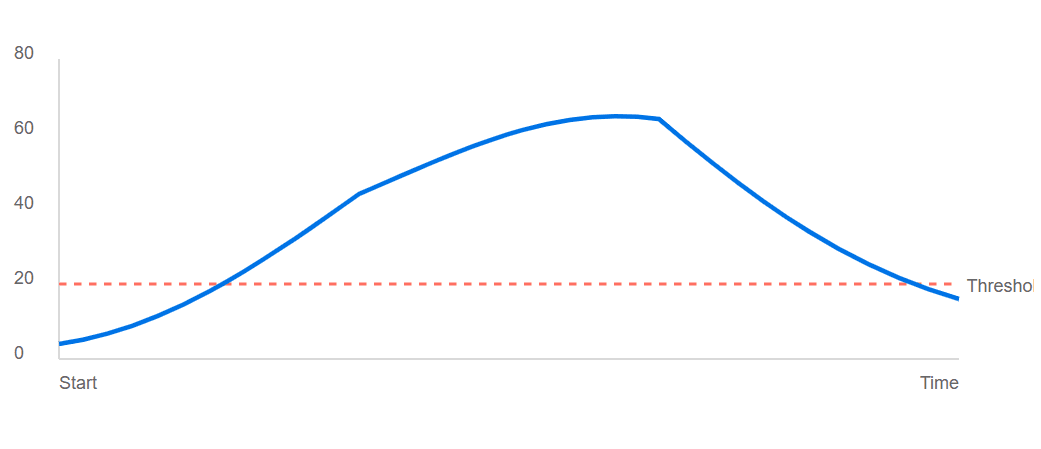
What is trend trading: Trend trading is a strategy that focuses on identifying and following the direction of market movements.
It is based on the idea that prices tend to move in persistent directions for some time, creating trends that traders can capitalize on. This approach aims to capture the momentum of the market rather than attempting to predict reversals or short-term fluctuations. Understanding the essence of trend trading and recognizing its key indicators can help traders position themselves effectively in various market conditions.
Trend trading involves entering positions aligned with the prevailing market direction—whether upward, downward, or sideways. Traders using this approach observe market behavior to confirm that a trend is established before committing to a trade. The goal is to ride the trend for as long as it lasts, exiting when signs of a reversal or weakening momentum appear.
This strategy can be applied to many financial instruments, including stocks, commodities, currencies, and indices. Since trends can develop over different time frames, trend trading can suit both short-term and long-term traders.
Unlike strategies that rely on predicting exact turning points, trend trading emphasizes patience and discipline. Traders wait for confirmation signals to avoid premature entries and reduce exposure to market noise.
Identifying a trend early provides a trader with a directional bias, which can improve decision-making and risk management. Trends reflect the collective behavior of market participants, influenced by economic factors, sentiment, and external events. Recognizing when a trend begins, continues, or ends is essential to managing trades effectively.
Trends can be classified into three main types:
Trend traders primarily seek to capitalize on uptrends and downtrends, while often avoiding or minimizing exposure during sideways markets.
To identify and confirm trends, traders rely on various tools and indicators. These help filter out noise and provide clearer signals of market direction. The most common indicators used in trend trading include moving averages, trendlines, the Average Directional Index (ADX), and the Relative Strength Index (RSI).
1. Moving Averages
Moving averages smooth out price data to reveal the underlying trend direction. They calculate the average price over a set period, updating as new data comes in. This creates a line that traders can use to identify whether prices are generally rising or falling.
Simple Moving Average (SMA): A straightforward average of closing prices over a specified period.
Exponential Moving Average (EMA): Places more weight on recent prices, making it more responsive to recent price changes.
Traders often watch the relationship between short-term and long-term moving averages. For example, when a shorter-term average crosses above a longer-term average, it suggests an emerging upward trend. Conversely, a cross below may signal a downward trend.
Moving averages also act as dynamic support or resistance levels where prices may pause or reverse temporarily.

source: tradingview
2. Trendlines
Trendlines are straight lines drawn on a price chart connecting successive lows in an uptrend or highs in a downtrend. They visually represent the direction and strength of the trend.
In an uptrend, the trendline is drawn along the rising lows, providing a support level.
In a downtrend, the trendline connects falling highs, acting as resistance.
When prices consistently respect these trendlines, it confirms the trend’s validity. A break of a trendline might indicate a weakening trend or a potential reversal.
Trendlines are simple yet powerful tools that help traders determine entry and exit points and manage risk by placing stops beyond these lines.
3. Average Directional Index (ADX)
The Average Directional Index measures the strength of a trend regardless of its direction. Unlike other indicators that indicate whether prices are moving up or down, the ADX focuses solely on how strong the movement is.

A rising ADX suggests the trend is gaining momentum.
A falling ADX indicates the trend is losing strength or the market is ranging.
While the ADX does not signal the trend’s direction, it helps traders decide when to apply trend-following strategies and when to be cautious due to weak or sideways conditions.
4. Relative Strength Index (RSI)
The Relative Strength Index compares the magnitude of recent gains to recent losses to identify overbought or oversold conditions. While commonly used for momentum and reversal signals, RSI can also assist trend traders in confirming trend strength.
In an uptrend, RSI tends to stay above a mid-level, showing consistent buying pressure.
In a downtrend, RSI often remains below this level, indicating ongoing selling pressure.
Divergences between RSI and price can warn of potential trend reversals, helping traders adjust their positions accordingly.

No single indicator is perfect on its own. Trend traders often combine multiple indicators to increase the reliability of their signals. For example, a trader might wait for a moving average crossover alongside a rising ADX to confirm an emerging trend. Trendlines can provide visual confirmation and logical levels for placing stop-loss orders.
Combining indicators also helps filter out false signals and reduces unnecessary trades, which is critical for maintaining discipline in trend trading.
A key aspect of trend trading is managing risk effectively. Since trends do not last forever, setting clear exit points is essential. Stops can be placed just beyond recent highs or lows or below trendlines to limit losses if the trend reverses unexpectedly.
Position sizing should reflect account size and risk tolerance, ensuring that no single trade can cause significant damage. Patience and discipline in following the trend while protecting capital are fundamental principles.
Advantages:
Challenges:
Trend trading revolves around following the prevailing market direction to capture sustained price movements. Identifying and confirming trends with reliable indicators like moving averages, trendlines, ADX, and RSI enhances the ability to make informed trading decisions. Combining these tools with solid risk management enables traders to navigate the markets with greater confidence.
While trend trading requires patience and discipline, its focus on aligning with market momentum makes it a widely used strategy that can be adapted to various trading styles and markets. Recognizing the signs of emerging and weakening trends is the foundation of this approach, empowering traders to engage markets in a structured and thoughtful manner.
Risk Warning: this article represents only the author’s views and is for reference only. It does not constitute investment advice or financial guidance, nor does it represent the stance of the Markets.com platform.When considering shares, indices, forex (foreign exchange) and commodities for trading and price predictions, remember that trading CFDs involves a significant degree of risk and could result in capital loss.Past performance is not indicative of any future results. This information is provided for informative purposes only and should not be construed to be investment advice. Trading cryptocurrency CFDs and spread bets is restricted for all UK retail clients.